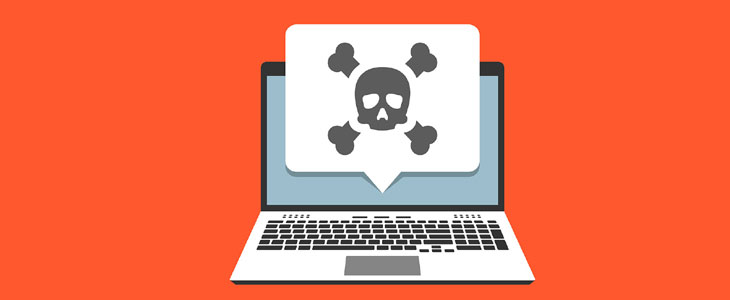Malware, abbreviation for “malicious software,” refers to a type of computer program designed to infect a legitimate user’s computer and inflict harm on it in multiple ways. Malware can infect computers and devices in several ways and comes in a number of forms, just a few of which include viruses, worms, Trojans, spyware and more. It’s vital that you know how to recognize and protect yourselves from malware in all of its forms.
Computer viruses are probably the most familiar type of malware — so named because they spread by making copies of themselves. Worms have a similar property. Other types of malware, such as spyware, are named for what they do: In the case of spyware, it transmits personal information, such as credit card numbers etc.,
As technology site Public CIO notes, cyber-criminals have even “locked up” computer data — making the information inaccessible — then demanded ransom from the users to get that data back.But the main risk that cyber criminals pose to heavy computer users is stealing online banking information such as banking and credit card accounts and passwords. The criminal hackers who steal this information may then use it to drain your account or run up fraudulent credit card bills in your name. Or they may sell your account information on the black market, where this confidential information fetches a good price.
How do you make sure your computer , server , VPS or network is malware-free? By Personal vigilance, and protective tools. One of the most popular ways to spread malware is by email, which may be disguised to look as if it is from a familiar company such as a bank, or a personal email from a friend.
Be wary of emails that ask you to provide passwords. Or emails that seem to be from friends, but have only a message such as “check out this cool website!” followed by a link.Personal vigilance is the first layer of protection against malware, but simply being careful is not enough. Because business security is not perfect, even downloads from legitimate sites can sometimes have malware attached. Which means that even the most prudent user is at risk, unless you take additional measures.
Although it is not possible for any antivirus system to completely eliminate the risk caused by infiltration and attacks, you can significantly minimize your risk of infection by following some best practice strategies. Use these strategies in combination with the protection you expect from your Anti virus product to help keep your information safe.
Keep your virus signature database current:
The specialists at the Anti virus labs analyze Internet threats throughout the day and release regular updates to continually improve the level of protection. you must auto set to update the virus signature database several times a day. These updates enable rapid detection of new threats and keep your computer well protected.
Use a firewall :
Use your Built in OS Firewall or use any reliable software or appliance based Firewall to protect your Desktops, Dedicated Servers, VPS etc.
Keep Real-time file system protection enabled :
By default, Real-time file system protection launches at system startup and provides uninterrupted scanning of all types of media in almost all Anti Virus software. Files are scanned again immediately after each virus signature database update.
Perform regular computer scans:
In addition to Real-time file system protection, the On-demand computer scan is an essential component of your security routine, particularly if you are a high-risk user or suspect that your computer is infected. Schedule a regular On-demand computer scan to detect threats that were present prior to the installation of your Anti virus, potentially harmful files that are dormant and were not detected prior to an update of the virus signature database and infections that may have occurred while the Real-time file system protection was disabled.
Practice safe internet browsing
- Restrict access to suspicious websites.
- Choose secure passwords.
- Keep your passwords secure.
- Beware of phishing and spam.
- Avoid downloading files or programs that you were not essential or suspected.
- Use a pop-up blocker.
- Do not change default settings, unless its necessary.
- Exercise caution with attachments and downloads.
- Download security patches for all the software installed.
- Teach Your staff to your kids safe Internet practices.
Back up your important data
Malware infection often leads to total malfunction of the operating system and damages important data. It is important to regularly back up your important and sensitive data to an external source such as a DVD or an external hard drive or on Cloud. These precautions make it far easier and faster to recover your data in the event of system failure. If you are runs business get a Cloud backup solution that enables full recovery from malwares etc., No protection is absolute. But a combination of personal awareness and well-designed protective tools will make your computer as safe as it can be. One way to defeat ransomware or malware after an infection is to have good backups that are off your network. Cloud backup systems may be your best option to recover from a ransomware attack.
